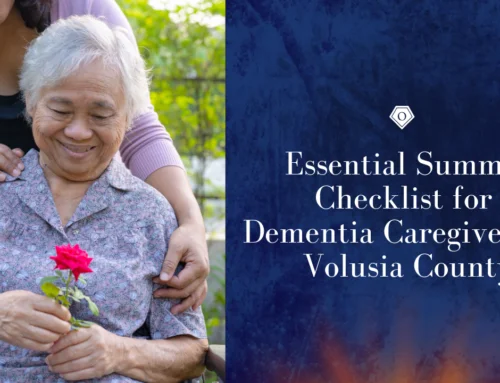Are you thinking of becoming a caregiver or have a spouse that was recently diagnosed with dementia or Alzheimer’s?
It’s essential to understand the different types of caregiving so you can make the “next best decision” as your loved one’s illness progresses.
There are different types of caregiving, and they vary based on the type of care provided and the person receiving care.
The most common types of caregiving:
- Informal caregiving: This type of caregiving is provided by family members, friends, or other unpaid individuals. Informal caregivers may assist with daily living activities, transportation, and emotional support.
- Formal caregiving: Formal caregiving is provided by trained professionals, such as nurses, home health aides, and physical therapists. These caregivers may provide medical care, physical therapy, and other forms of specialized support.
- Respite caregiving: Respite caregiving provides temporary relief for primary caregivers. This may involve hiring a temporary caregiver to provide care for a few hours or days or arranging for the person receiving care to stay in a respite care facility.
- Hospice caregiving: Hospice caregiving provides end-of-life care for individuals who are terminally ill. Hospice caregivers may provide pain management, emotional support, and spiritual guidance.
- Long-term care: Long-term care is provided in a nursing home or other facility for individuals who require ongoing assistance with daily living activities due to age, illness, or disability.
- Self-care: Self-care involves providing care for oneself, such as managing one’s health and wellness, taking medication, and making healthy lifestyle choices.
It’s important to note that caregiving can involve a combination of these types, and the kind of care provided will depend on the individual’s needs and the resources available.
Choosing the right type of caregiving will depend on the needs and preferences of the person receiving care and the resources available.
What to consider when choosing the right type of caregiving:
- Health and medical needs: Consider the person’s health and medical needs and whether they require specialized medical care or assistance with daily living activities.
- Family support: Evaluate available support from family members and friends, and determine whether informal caregiving is sufficient or if additional support is needed.
- Financial resources: Consider the cost of care, including out-of-pocket expenses or insurance coverage, and determine what resources are available for care.
- Location: Consider the location of the person receiving care, and whether they can remain in their home or need to move to a care facility.
- Personal preferences: Consider the preferences of the person receiving care, including their desire for independence, the type of care they prefer, and their cultural and spiritual beliefs.
It’s crucial to involve the person receiving care in the decision-making process and to consult with healthcare professionals and other experts to determine the most appropriate type of caregiving. In addition, caregiving needs can change over time, so it’s important to reevaluate the situation and regularly adjust as needed.
Family caregivers know when it’s time for something formal. Often, they reach a personal breaking point, or their loved one’s needs outgrow their capabilities.
Formal caregiving, provided by trained professionals such as nurses, home health aides, and physical therapists, can offer many benefits to the person receiving care and their family members.
The benefits of formal caregiving:
- Specialized expertise: Formal caregivers have specialized training and expertise in providing medical care, physical therapy, and other forms of specialized support. Click here to learn about skilled care.
- Consistency and reliability: Formal caregivers are often scheduled to provide care at specific times, providing consistency and reliability in care.
- Reduced burden on family members: Formal caregiving can help to reduce the burden on family members who may have other responsibilities or may not have the expertise needed to provide specialized care. Click here to learn about skilled care.
- Improved quality of life: Formal caregiving can help to improve the quality of life for the person receiving care, by assisting with daily living activities and other forms of support. Click here to learn about personal care.
- Increased safety: Formal caregivers can help to ensure the safety of the person receiving care, by monitoring for changes in health and providing appropriate medical care. Click here to learn more about skilled care.
- Peace of mind: Knowing that a loved one is receiving professional care can provide peace of mind for family members, reducing stress and anxiety.
It’s important to note that formal caregiving may only be appropriate or necessary for some, and the type of care provided will depend on the individual’s needs and the resources available.
If you are considering formal caregiving for yourself or a loved one, here are some steps to help you get started:
- Assess your needs: Start by assessing your or your loved one’s needs, including any medical or physical limitations, assistance needed with daily living activities, and emotional support requirements. This will help you determine what type of formal caregiving is needed.
- Identify potential providers: Research potential providers of formal caregiving services, such as home health agencies, nursing homes, and assisted living facilities. Consider factors such as the provider’s reputation, services offered, and cost.
- Schedule consultations: Schedule consultations with potential providers to learn more about their services and ask any questions you may have. This will also give you a chance to get a sense of the provider’s approach and the quality of care they provide.
- Check references: Ask for references from the provider and contact them to learn about their experiences with the provider.
- Consider insurance coverage: Check with your or your loved one’s insurance provider to determine what services are covered under their plan.
- Develop a care plan: Work with the provider to develop a care plan that addresses your or your loved one’s needs and preferences. This may include developing a schedule of care, identifying specific services to be provided, and establishing a communication plan.
- Monitor and evaluate care: Monitor the quality of care provided by the formal caregiver and evaluate the care plan regularly to ensure that it continues to meet your or your loved one’s needs.
Remember that formal caregiving can be expensive, so it’s important to consider the cost and to explore all available resources, including insurance, government programs, and community resources, to help cover the cost of care.

Choosing long-term care is a burden that often falls to adult children and family caregivers. Our team is here to support you throughout the journey. Download our booklet to explore options that are right for your aging loved one and family.
Wondering what type of long-term care is best for you or your loved one? Our free booklet will help you evaluate the differences and costs between home care, nursing homes and assisted living facilities.






